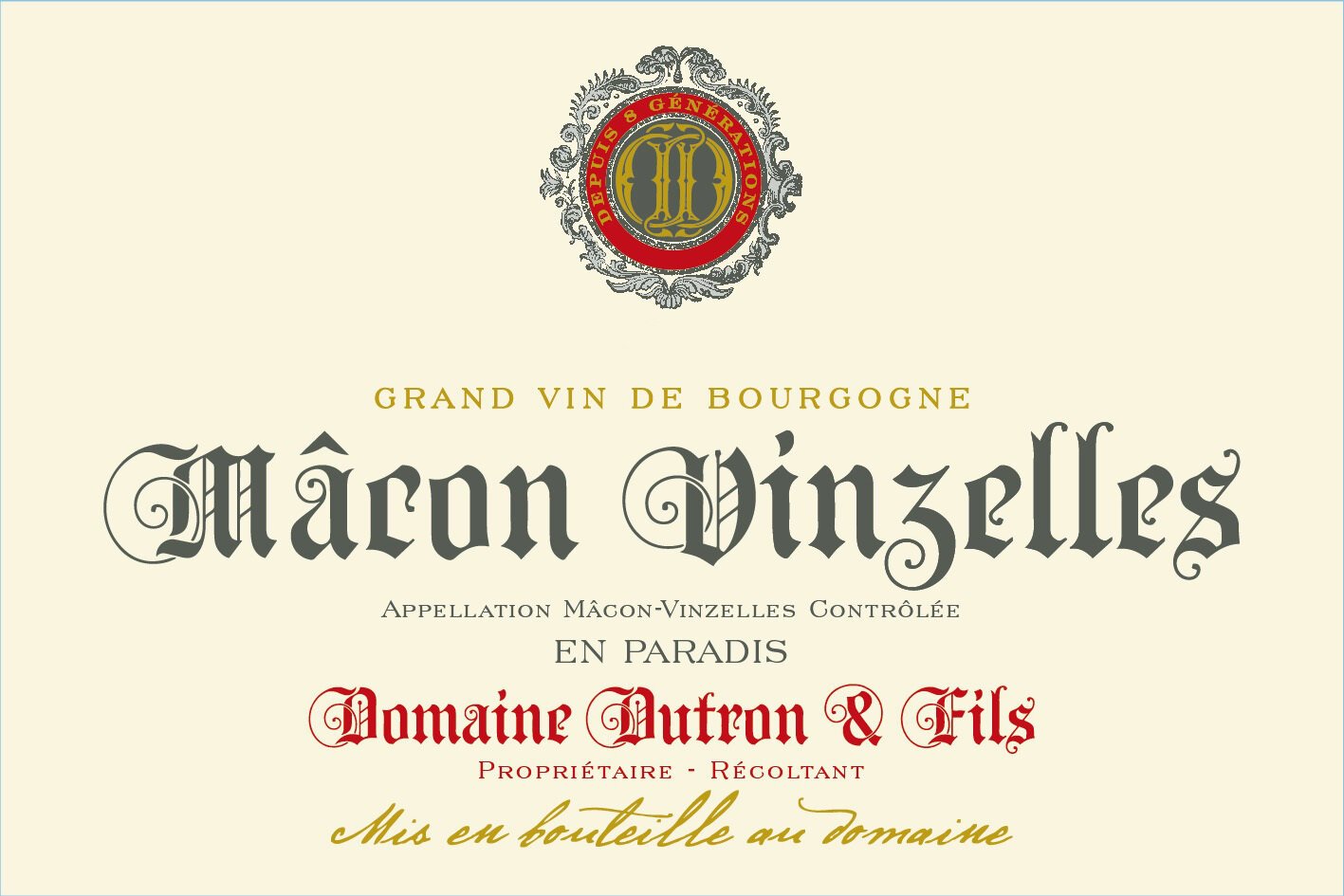France > Burgundy > Maconnais > Dutron & Fils
organic practices
The maconnais
The southern portion of Burgundy known as the Maconnais is a rolling region of gentle hills and valleys that has been farmed for millenia. The famed rocks of Vergisson and Solutre were used in Neolithic times to stampede animals off the cliffs, providing vast supplies of animal meat for the locals. Grapes were introduced by the Romans for whom the town of Macon was a major crossroads. During the middle ages, Macon sat on the border between the Kingdom of France and the Holy Roman Empire (which means, also between the (French) County of Burgundy and the (Imperial) Duchy of Burgundy), and grew rich on customs duties collected in transit. Passing between French and Imperial control for centuries, the region was permanently incorporated into the Kingdom of France by the Treaty of Cambrai in 1529. After the upheavals of the Revolutionary and Napoleonic eras, the region has settled into a sleepy agricultural cycle largely around the popularity of its native Chardonnay grape.
Of note is the village of Chardonnay, just south of the town of Tournus on the Saone. The Chardonnay grape originated as a cross between Gouais Blanc and Pinot Noir in this region, likely in the 12th Century. Gouais and Pinot crosses show strong hybrid vigor, and other successful crosses of these two varieties include Aligote and Gamay.
The vineyards are underlain by largely Mesozoic limestone. Soils in the valleys are of course richer and contain more clays, while the upper hillsides tend to be poorer and purer limestone. The cliffs of Solutre and Vergission are ancient coral plateaus more resistant to erosion than the surrounding limestones.
The Rock of Solutre photo credit
domaine dutron & fils
Also known as Chateau Vitallis, the family domain is in the usual legal transition from one generation to the next, and so operates under two labels.
Built in the 13th century for the Lords of Fuisse, Château Vitallis now has 17 hectares under vine, all of which is planted to Chardonnay. Proud of their terroir and dedicated to bringing out the full range of its aromas, 6th and 7th-generation growers Denis and Maxime Dutron apply careful, largely organic farming practices to their vines, believing that great wines are made in the vineyard.
Vineyards are worked sustainably, with green cover between the rows and minimal intervention in the vineyard. After harvest, fermentation is achieved naturally using indigenous wild yeasts, and malolactic fermention is likewises allowed to proceed naturally with no introduction of commercial fermenters.
Denis & Maxime Dutron
The Wine
Macon-Vinzelles “En Paradis:” The Macon-Vinzelles appellation lies directly downslope from the Pouillty-Vinzelles appellation. While the Pouilly section is located on a substrate of Mesozoic limestone, the Macon section is on a richer soil composed of clays intermixed with pebbly scree from the limestones above. It produces a richer, slightly riper style of wine.
The ‘En Paradis’ is a study of fruit and freshness. It is made from a single, unique plot of Chardonnay on clay-loam soils – some of the Domaine’s oldest vines, planted in 1935.
To preserve its characteristic aromas and freshness, the wine is vinified using traditional methods for only 6 months, on its fine lees, in temperature-controlled stainless-steel vats. On the nose, it is elegant and delicate, with subtle aromas of white flowers and apricots. On the palate, the wine is well-balanced with notes of mandarin and grapefruit. The mid-palate is underpinned by a fine minerality, and there is a nice tension on the finish, with hints of marmalade and apricot jam.
Detail 3
Nulla lectus ante, consequat et ex eget, feugiat tincidunt metus. Nulla lectus ante, consequat et ex eget, feugiat tincidunt metus.
Detail 4
Nulla lectus ante, consequat et ex eget, feugiat tincidunt metus. Mauris egestas at nibh nec finibus.





